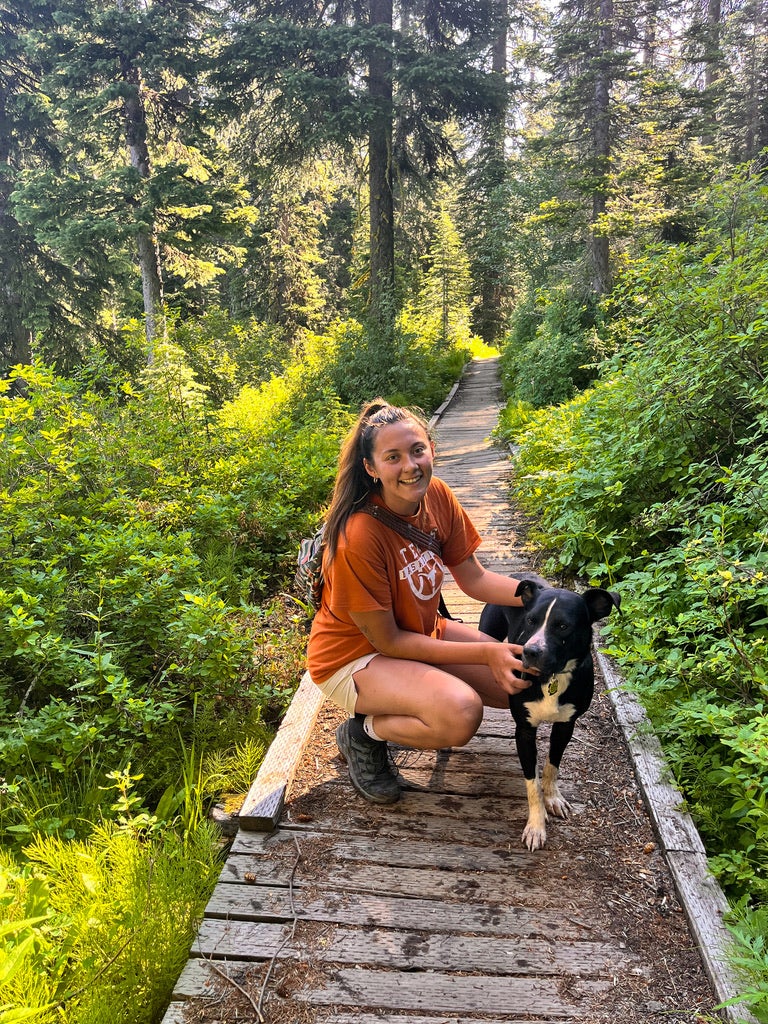This April, Boise State faculty, staff and students are sharing what research and creative activity at the university means to them.

Braelyn Shields is a Master of Environmental Management student and graduate research assistant. Shields hails from Boise and received the Global Collaboration Certificate award in 2021 for collaborating with Peruvian students on projects, presentations and reports on the ethnic minority of the Bantu in Somalia.
Q: What motivates you to explore new ideas or create something original?
A: We were told as little kids that we could change the world one person at a time, and while for many that may not seem true anymore, to me I still find it possible. Creating new understandings of the world is essential to progressing within it, and the conversations with others who have the same mindset are some of the most inspiring and productive ones you’ll see which I get to experience weekly in class. Peers are always providing tid-bits of new ways to look at our environment and society, which I incorporate into ongoing research projects daily, which keeps it fresh and exciting.
Q: How do you think research and creative activity contribute to society?
A: Research and creative activities drive meaningful change by pushing boundaries, challenging norms, and uncovering practical solutions to real-world problems. They help us understand complex issues, from environmental management to community resilience, and translate knowledge into action. In rural areas, for example, research isn’t just theoretical—it shapes land use decisions, strengthens local economies, and fosters collaboration between people and their environment. Creativity and inquiry fuel innovation, not only in technology but also in the ways we think, connect, and build a more sustainable and equitable society.
Q: Research and Creative Activity are impossible in a vacuum. Is there anyone you would like to thank for supporting, mentoring, inspiring, or otherwise shaping your work?
A: I started grad school with no idea how research even worked, but thanks to my incredible mentors, Dr. Jared Talley and Dr. Matt Williamson, I’ve grown into a life-long learner who can ask tough questions and tackle big ideas. Their patience, wisdom, and unwavering support have shaped me in ways I can’t begin to thank them for. Dr. Talley’s Philosophy of the West lab, and Dr. Williamson’s SpaSES lab are full of supportive learners and I appreciate each of them for contributing to my own learning experience, and for them listening to my all-over-the-place research updates. I learn so much from just having a seat at the table and I’m so grateful for their guidance—this experience wouldn’t be the same without them!
Q: What does Research and Creative Activity at Boise State mean to you?
A: Research at Boise State is my way of giving back to the land that raised me. I spent my childhood camping nearly every summer weekend, wading through rivers, climbing trees, and feeling completely at home in Idaho’s wild places. Fourth-grade Idaho history first taught me how deeply people and landscapes are connected, ultimately inspiring my career trajectory, and now, my research lets me protect the places that shaped me. It’s more than academics—it’s a way to honor the places that made me who I am.